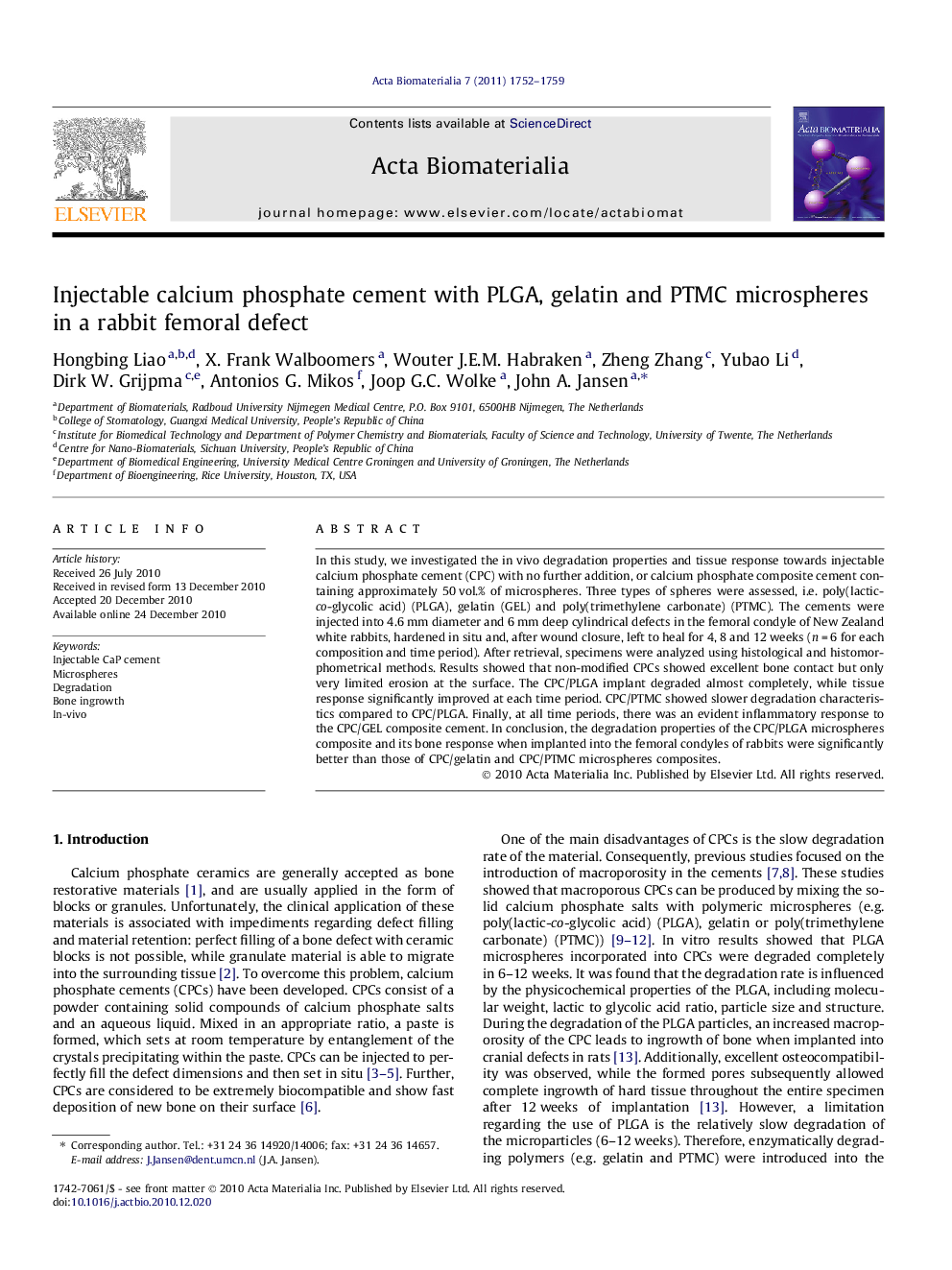| Article ID | Journal | Published Year | Pages | File Type |
|---|---|---|---|---|
| 10160298 | Acta Biomaterialia | 2011 | 8 Pages |
Abstract
In this study, we investigated the in vivo degradation properties and tissue response towards injectable calcium phosphate cement (CPC) with no further addition, or calcium phosphate composite cement containing approximately 50 vol.% of microspheres. Three types of spheres were assessed, i.e. poly(lactic-co-glycolic acid) (PLGA), gelatin (GEL) and poly(trimethylene carbonate) (PTMC). The cements were injected into 4.6 mm diameter and 6 mm deep cylindrical defects in the femoral condyle of New Zealand white rabbits, hardened in situ and, after wound closure, left to heal for 4, 8 and 12 weeks (n = 6 for each composition and time period). After retrieval, specimens were analyzed using histological and histomorphometrical methods. Results showed that non-modified CPCs showed excellent bone contact but only very limited erosion at the surface. The CPC/PLGA implant degraded almost completely, while tissue response significantly improved at each time period. CPC/PTMC showed slower degradation characteristics compared to CPC/PLGA. Finally, at all time periods, there was an evident inflammatory response to the CPC/GEL composite cement. In conclusion, the degradation properties of the CPC/PLGA microspheres composite and its bone response when implanted into the femoral condyles of rabbits were significantly better than those of CPC/gelatin and CPC/PTMC microspheres composites.
Related Topics
Physical Sciences and Engineering
Chemical Engineering
Bioengineering
Authors
Hongbing Liao, X. Frank Walboomers, Wouter J.E.M. Habraken, Zheng Zhang, Yubao Li, Dirk W. Grijpma, Antonios G. Mikos, Joop G.C. Wolke, John A. Jansen,
